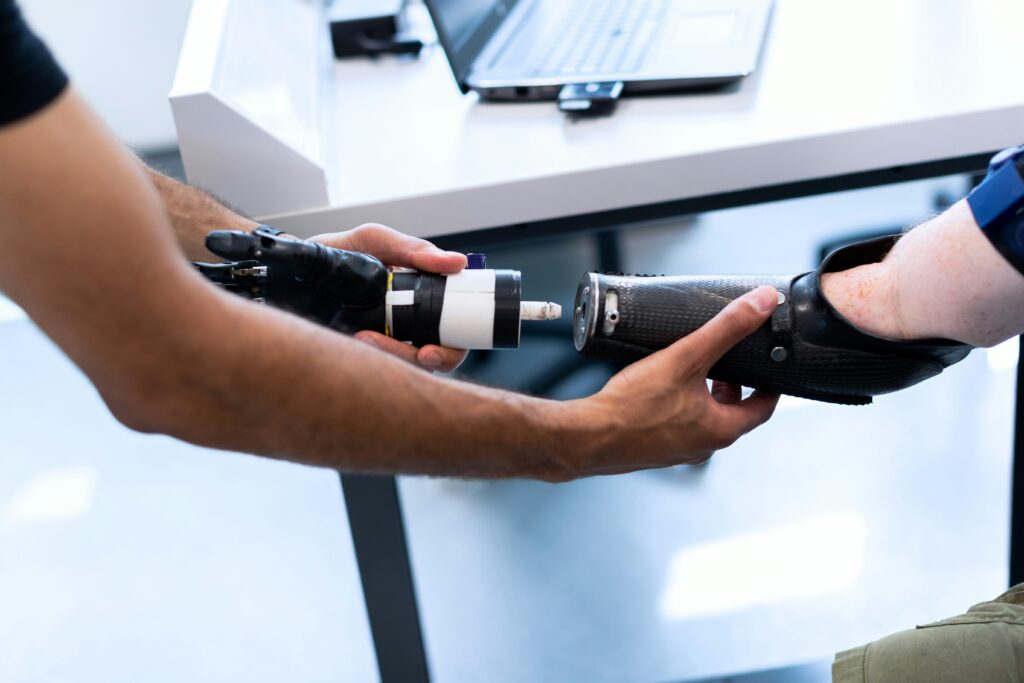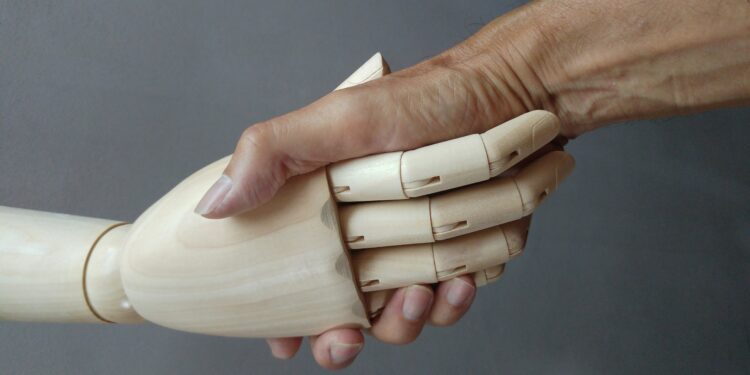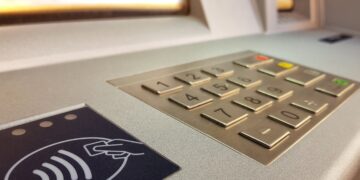Myomo Inc. (NYSE:MYO) is a U.S.-based wearable medical robotics company best known for the MyoPro® powered arm orthosis, a clinically supervised device designed to help individuals with upper-limb paralysis or weakness regain the ability to use their own hands and arms in daily life. Rooted in engineering and rehabilitation science, the company’s name—“My Own Motion”—captures its mission: restoring functional movement to people whose lives have been changed by stroke, brachial plexus injury, spinal cord injury, and other neuromuscular conditions. What began as a focused effort to translate breakthrough research into practical assistive technology has evolved into a commercial platform that integrates advanced sensors, intelligent motors, custom orthotic design, and a clinician-led care pathway so patients can reach for, grasp, and hold objects again using their own muscle signals.
From the very beginning, Myomo concentrated on solving a stubborn gap in neurorehabilitation: how to provide reliable, repeatable functional assistance outside the clinic so users can practice and perform real-world tasks at home, at work, and in their communities. The MyoPro system detects faint electrical activity from a user’s muscles and amplifies it to power the orthosis, enabling purposeful motion even when natural strength is limited. This human-in-the-loop control—where the wearer’s own intent drives movement—has become the company’s defining approach, aligning therapy goals with everyday function and encouraging long-term adherence because users see and feel tangible results in ordinary tasks like lifting utensils, carrying a light bag, or holding a phone.
As its technology matured, Myomo built an end-to-end clinical and commercial model around the patient journey. The company works closely with prosthetist-orthotist partners, therapists, and physicians to identify appropriate candidates, document medical necessity, secure insurance authorizations, and custom-fit each device. Over the years, Myomo has expanded access through a combination of direct billing, collaborations with the Veterans Health Administration, and a growing network of independent O&P clinics. That ecosystem ensures that evaluation, fitting, training, and follow-up are delivered by clinicians who understand both the biomechanics of upper-limb impairment and the practical realities of daily use.
Myomo’s background is also marked by steady progress in reimbursement and policy recognition, which is essential for durable patient access in assistive technology. The company has worked with payers to establish coverage pathways that reflect the device’s classification and clinical criteria, helping physicians and therapists navigate documentation standards while giving patients and families clearer expectations on eligibility and timelines. As more providers gain familiarity with MyoPro and more patients share success stories, referral patterns continue to broaden from inpatient rehab hospitals to outpatient therapy centers and community-based practices.
On the engineering side, the company’s story is one of continuous refinement rather than one-off inventions. Myomo has iterated its hardware and software to improve comfort, reliability, and ease of donning and doffing, while enhancing signal processing so the device can respond to tiny EMG inputs and turn them into smoother, more controlled motion. Those improvements flow back into the clinical workflow: better fittings, faster training, and higher user confidence. The result is a technology platform that supports both restorative goals—encouraging repeated practice that may aid neuroplasticity—and compensatory needs, providing immediate functional assistance when strength is insufficient.
Commercially, Myomo operates at the intersection of medical device rigor and orthotics-and-prosthetics craftsmanship. Each MyoPro is custom-built for the wearer and delivered through a managed process that balances precision fabrication with one-on-one education. The company invests in clinician training so that O&P partners can evaluate candidates effectively, set realistic goals, and teach users how to incorporate the device into everyday routines. This model positions Myomo not just as a device maker, but as a long-term partner to rehab teams and families working toward independence after a life-altering diagnosis or injury.
Today, Myomo’s background can be summed up as a sustained commitment to translating advanced human-machine interfacing into meaningful daily function. It is a company formed around a simple idea—that the best assistive technology should amplify the user’s own intent—and it continues to scale that idea through clinician partnerships, reimbursement know-how, and careful attention to the lived experience of each patient. By pairing engineering excellence with a patient-first clinical pathway, Myomo has carved out a distinct role in neurorehabilitation: making “my own motion” possible again for people who need it most.
Headline numbers that matter: Revenue acceleration and pipeline scale
Second quarter revenue reached $9.7 million, a new bar for the company’s mid-year cadence and a 28% jump from the prior year period. The quality of that revenue improved as well, with 53% of revenue units generated from authorizations and orders received and filled within the same quarter, signaling faster cycle times and better operational execution. Revenue units were 178, up 13%, and the average selling price rose approximately 14% to $54,200, reflecting product pricing power and payer mix benefits. Importantly, Medicare Part B patients represented 56% of second quarter revenue—a structurally supportive mix given the posted fee-schedule pathway for the device. Year-to-date revenue of $19.5 million stands 73% above the first half of 2024, showing momentum that extends beyond a single quarter.

CHECK THIS OUT: NioCorp (NB)’s $1.14B Elk Creek Project Set to Transform U.S. Critical Minerals Supply and Endeavour (EXK) Poised to Double Output With Kolpa and Terronera Expansion.
Commercial engine check: A bigger, more engaged patient pipeline
Beneath the top line, the pipeline tells the long-run story. Myomo added 816 medically qualified patients in the quarter, up 49%, and ended June with 1,611 candidates in process, up 37% year over year. Management called out three factors that affected near-term operating metrics: the quality of digitally sourced leads after an external algorithm change, lower conversion rates as the clinical team heightened its outcome focus and disqualified more borderline cases, and a cohort timing effect where 40–50% of pipeline adds typically originate from leads generated a year or more earlier. Read together, those points argue that the larger, healthier funnel today is designed to yield steadier authorizations and deliveries over the next several quarters, not just the next several weeks.
Velocity is improving even as backlog normalizes
Authorizations and orders for the quarter totaled 207 units, down 3% year over year, and the quarter-end backlog fell 18% to 230 units. On the surface that looks like slowing demand; in context, it reflects a faster rate of turning in-quarter authorizations into revenue, which reduces the pile of work-in-process. That is consistent with the 53% of revenue units sourced and delivered within the quarter. In other words, Myomo is doing more work, faster, and carrying less unfinished business on the balance sheet. For small-cap med-tech, that operational cadence is a competitive advantage because it shortens cash cycles, smooths forecasting, and keeps clinicians and patients engaged.
Marketing pivot: From clicks to conversations that convert
Lead quality is the lifeblood of durable growth. Management is shifting budget from broad digital channels toward television while mobilizing its clinical team to deepen engagement with therapists and physicians nationwide. The goal is simple: elevate awareness where clinical conversations start, improve patient preparedness before evaluation, and generate referrals that are more likely to meet medical necessity criteria. While advertising costs rose 162% year over year to $2.2 million and cost per direct-billing pipeline add increased 89% to $2,926, this is a deliberate investment phase aimed at building a higher-signal funnel. Historically, a large portion of pipeline adds emerges from older cohorts of leads; that lag means today’s media and clinician-education push should pay off across 2026 and beyond.
Economics and margins: Short-term pressure, long-term leverage
Gross margin was 62.7% in the quarter versus 70.8% a year ago, largely due to higher materials and overhead as the company scaled production, invested in facility improvements, and built more demo units for clinicians and the O&P channel. Year-to-date gross margin of 65.0% compares with 67.6% in the first half of 2024. The margin dip is a near-term byproduct of scaling and a richer clinical enablement footprint rather than a structural reset of unit economics. With ASPs up double-digits and Medicare continuing to represent a majority of revenue, Myomo retains a clear path back to margin expansion as conversion improves, cohorts mature, and the mix benefits of fee-schedule reimbursement flow through.
Operating discipline: Cost realignment to protect runway
Operating expenses rose 65% year over year to $10.6 million in the quarter as the company staffed to support direct billing growth, increased engineering spend, and leaned into advertising. Management moved quickly to rebalance spend, reducing headcount by approximately 8% in July and trimming outside services, actions expected to lower cash expenditures by at least $2 million over the next 12 months. This kind of responsiveness matters in small-cap med-tech: it preserves flexibility while the demand engine is being tuned and keeps focus on productivity per marketing dollar and per clinical hour.
Cash, audits, and working capital: Transitory friction clearing
Myomo ended June with $15.5 million in cash, cash equivalents, and short-term investments after drawing $4.0 million on its credit facilities. Second quarter operating cash use was $8.9 million, elevated by higher operating loss, capitalized software and manufacturing investments, demo units, and several one-time working-capital items including 2024 incentive compensation of $2.9 million, a DME MAC payment hold tied to an address change, and pre-payment audits by two DME MACs. Management reports that the payment hold was lifted and aged receivables were paid at the beginning of August, most audited claims have been paid with only a handful denied and slated for appeal, and normalized second-quarter cash burn would have been about $4.9 million absent these non-recurring outflows. On that trajectory, and with expense actions underway, the company believes it has sufficient liquidity to fund operations for the next twelve months.
Guidance reset: Lower headline, higher quality
Management updated 2025 revenue guidance to $40–$42 million from $50–$53 million, framing the change as a quality-over-quantity pivot that emphasizes better lead sources, more decisive clinical triage, and conversion discipline. The company also guided third quarter revenue to $9.5–$10.0 million. For investors, this reset reduces execution risk in the near term while preserving the multi-year expansion case powered by Medicare access, private-payer learning curves, and a larger, more qualified funnel. It is not a demand cliff; it is a plan to translate growing awareness and clinical interest into steadier authorizations and faster deliveries.
Product moat and payer position: A defensible advantage
MyoPro occupies a rarefied space at the intersection of neuro-rehabilitation and assistive robotics. The device’s brace classification and fee-schedule reimbursement under Medicare Part B provide a durable backbone that many early-stage med-tech peers lack. That payer clarity is already reflected in the revenue mix and in the willingness of clinicians to invest time and training, evidenced by the growing number of qualified candidates and the expansion of in-quarter conversions. As the clinician ecosystem matures and documentation pathways standardize, the friction points that can slow authorizations tend to compress, supporting both growth and gross margin.
What to watch next: Lead quality, conversion cadence, and margin mix
The most important forward indicators over the next few quarters are the proportion of revenue units sourced and delivered intra-quarter, the trend in authorizations relative to pipeline adds, the shape of the backlog as cycle times stabilize, and the trajectory of gross margin as ASPs and payer mix exert leverage against input costs. On the operating side, investors should look for continued progress in television-driven leads and clinician-initiated referrals, which historically produce stronger engagement and higher clinical eligibility. On cash, the absence of one-time working-capital drags plus the $2 million run-rate expense savings should make the burn profile more predictable.
Investment view: A compounding story in the making
Myomo’s second quarter showed a company willing to trade short-term headline growth for long-term quality, and that is often the right decision at this phase of scale. Demand signals remain robust, ASPs are rising, Medicare continues to anchor reimbursement, and the pipeline is larger and more qualified than a year ago. Near-term pressures on margin and cash are understandable given investments in marketing and clinical enablement and the now-resolved administrative hiccups with payers. With the guidance reset, expectations are better aligned with the company’s focus on conversion discipline and operational velocity. For investors comfortable with small-cap volatility, MYO offers asymmetric upside tied to improving funnel economics, accelerating intra-quarter conversions, and the compounding effect of a growing, better-qualified patient base.
Valuation context and scenario framing
In setting expectations, it helps to frame scenarios around three controllable levers: average selling price, conversion velocity, and payer mix. ASPs are already up roughly 14% year over year, and mix should continue to favor Medicare and maturing private payers as clinical documentation tightens. Conversion velocity has improved, as evidenced by the majority of revenue units now coming from in-quarter authorizations and orders, which tends to support both top-line cadence and working-capital efficiency. Payer mix benefits typically flow through to gross margin with a lag, so incremental improvement there could offer upside to the consolidated margin line even before manufacturing scale effects kick in. Against that backdrop, a $40–$42 million revenue year still leaves room for operating leverage as the marketing pivot bears fruit and as backlog stabilizes at levels consistent with faster cycle times rather than slower demand.
Bottom line: Evidence of endurance, with catalysts lined up
Myomo is executing on a rare blend of structural reimbursement clarity and expanding real-world demand. The second quarter validated the company’s ability to grow revenue while tightening the conversion loop, even as it reset guidance to favor healthier growth. With a broader patient pipeline, a more targeted go-to-market motion, and administrative headwinds receding, the setup for the next year is one of improving funnel quality, firmer margins over time, and increasing cash-flow visibility. In a small-cap med-tech landscape where many stories hinge on binary catalysts, Myomo’s path is refreshingly operational: better leads, better conversion, better economics—quarter after quarter.
CHECK THIS OUT: NioCorp (NB)’s $1.14B Elk Creek Project Set to Transform U.S. Critical Minerals Supply and Endeavour (EXK) Poised to Double Output With Kolpa and Terronera Expansion.






